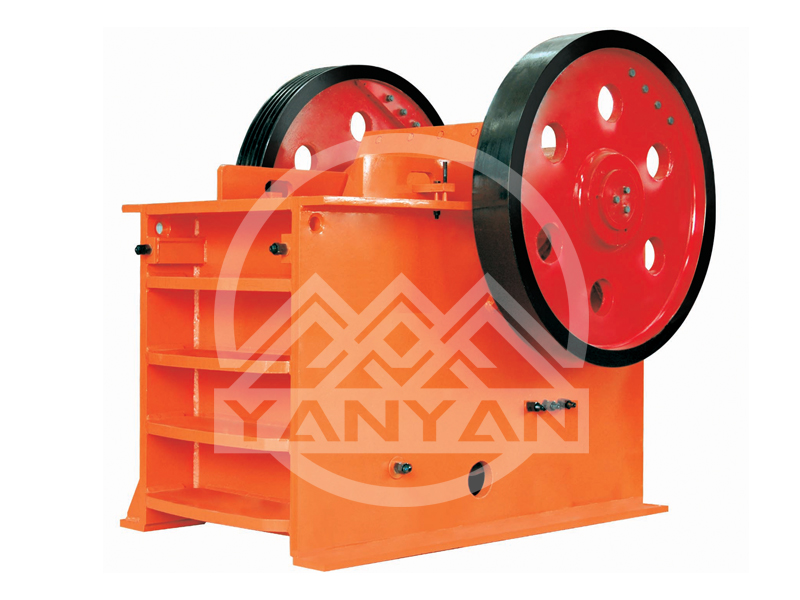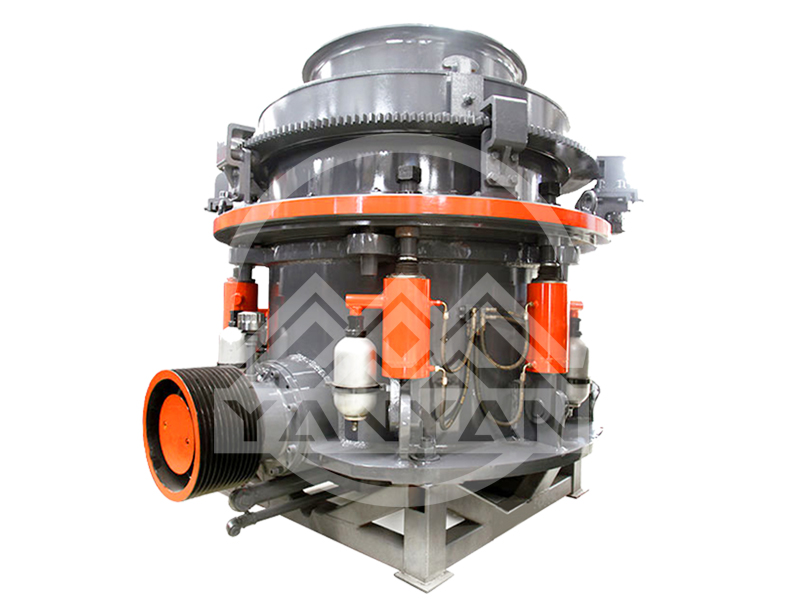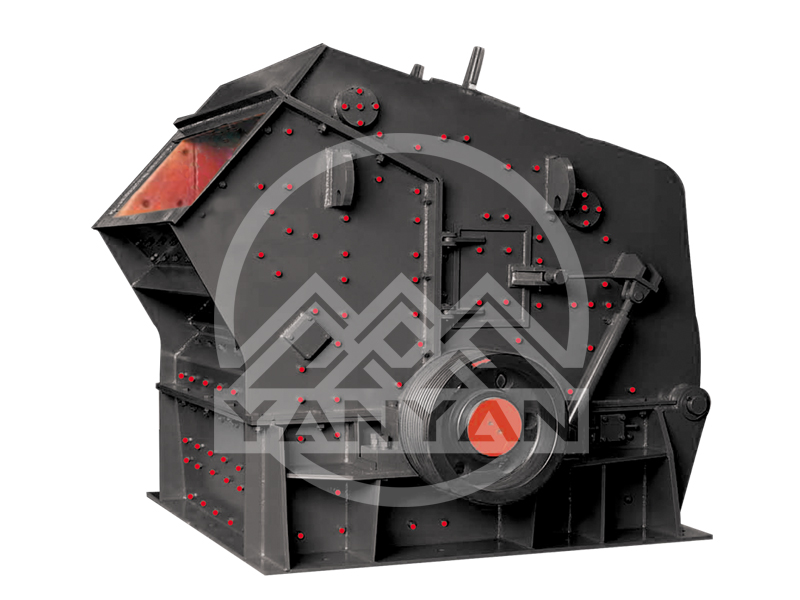Basalt is a common volcanic rock that is widely used in the construction, road, and railway industries due to its excellent physical and mechanical properties. However, basalt is also a relatively hard and abrasive material, which poses challenges to the crushing process. Selecting the right type of crusher is crucial to ensure efficient production, high product quality, and low operating costs. In this article, we will explore several types of crushers and determine which one is more suitable for producing harder basalt.
Jaw Crushers
Jaw crusher are one of the most commonly used crushers in the mining and construction industries. They are suitable for primary crushing of various hard and brittle materials, including basalt. Jaw crushers work by compressing the material between a fixed jaw plate and a moving jaw plate, which gradually reduces the size of the material.
Advantages for Basalt Crushing
- High Crushing Ratio: Jaw crushers can achieve a high crushing ratio, which means they can reduce large pieces of basalt to smaller sizes in a single pass. This is beneficial for handling large volumes of basalt and improving production efficiency.
- Robust Structure: They are designed with a robust and durable structure, making them capable of withstanding the high impact and abrasion forces generated during the crushing of hard basalt. The use of high - quality materials for the jaw plates also ensures a long service life.
- Simple Operation and Maintenance: Jaw crushers have a relatively simple structure, which makes them easy to operate and maintain. The components are easily accessible, and routine maintenance tasks such as replacing worn - out parts can be carried out quickly, minimizing downtime.
Limitations
- Particle Shape: The particles produced by jaw crushers may not have a very regular shape. For some applications where a specific particle shape is required, additional processing may be needed.
- Fine Crushing: Jaw crushers are mainly used for primary crushing, and their ability to produce very fine particles is limited.
Cone Crushers
Cone crusher are another popular choice for crushing hard materials like basalt. They are often used for secondary and tertiary crushing. Cone crushers work on the principle of compression and shear. The material is crushed between a mantle (moving cone) and a concave (fixed cone).
Advantages for Basalt Crushing
- Good Particle Shape: Cone crushers can produce particles with a more regular and cubic shape compared to jaw crushers. This is highly desirable in applications such as road construction, where well - shaped aggregates are required for better compaction and strength of the road surface.
- High - Efficiency Crushing: They are designed to provide high - efficiency crushing, with a continuous and stable operation. The crushing chamber of a cone crusher is optimized to ensure that the material is evenly distributed and effectively crushed, resulting in a high production capacity.
- Adjustable Discharge Size: Cone crushers allow for easy adjustment of the discharge size, which enables operators to produce aggregates of different sizes according to specific requirements. This flexibility makes them suitable for a wide range of applications.
Limitations
- Initial Cost: Cone crushers generally have a higher initial cost compared to some other types of crushers. However, this cost can be offset by their long - term performance and productivity.
- Complex Maintenance: The maintenance of cone crushers can be more complex due to their more intricate structure. Specialized skills and tools may be required for tasks such as adjusting the clearance between the mantle and the concave.
Impact Crushers
Impact crusher are also considered for basalt crushing, especially when a high - quality product with a good shape and a wide range of particle sizes is needed. Impact crushers use the impact force to break the material. There are two main types: horizontal shaft impact crushers (HSI) and vertical shaft impact crushers (VSI).
Horizontal Shaft Impact Crushers (HSI)
Advantages for Basalt Crushing
- High Reduction Ratio: HSI crushers can achieve a very high reduction ratio, which means they can transform large basalt rocks into fine particles in a single operation. This is useful for applications that require a significant reduction in particle size.
- Good Particle Shape: Similar to cone crushers, HSI crushers can produce particles with a cubic shape. The impact - based crushing mechanism helps to break the basalt in a way that results in well - shaped aggregates, which are suitable for high - end construction projects.
- Versatility: They can handle a variety of materials, including basalt, and are adaptable to different production requirements. The ability to adjust the rotor speed and the impact plates allows for the production of different particle sizes and shapes.
Limitations
- Abrasion of Wear Parts: The impact plates and other wear parts in HSI crushers are subject to significant abrasion when crushing hard basalt. This may require more frequent replacement of these parts, increasing the operating costs.
- Energy Consumption: HSI crushers tend to consume more energy compared to some other types of crushers, especially when operating at high capacities.
Vertical Shaft Impact Crushers (VSI)
Advantages for Basalt Crushing
- Excellent Particle Shape: VSI crushers are known for producing the best - shaped particles among all crusher types. The unique crushing mechanism, which involves the material being thrown against anvils or rock - on - rock crushing, results in highly cubical and well - graded aggregates. This makes VSI crushers ideal for producing high - quality basalt aggregates for applications such as concrete production.
- High - Quality Sand Production: In addition to producing aggregates, VSI crushers are also very effective in producing high - quality sand. For basalt, which can be used to produce artificial sand, VSI crushers can ensure that the sand particles have the right shape and size distribution.
- Low Operating Costs in the Long Run: Although the initial investment in a VSI crusher may be relatively high, their long - term operating costs can be lower. The wear - resistant materials used in their construction and the efficient crushing process contribute to reduced maintenance and energy costs over time.
Limitations
- Complex Installation and Commissioning: VSI crushers require more complex installation and commissioning procedures compared to some other crushers. This may require the assistance of specialized technicians and additional time to ensure proper operation.
- Limited Feed Size: VSI crushers have a relatively limited maximum feed size compared to jaw crushers, for example. Larger basalt rocks may need to be pre - crushed before being fed into a VSI crusher.
Conclusion
When it comes to crushing harder basalt, each type of crusher has its own advantages and limitations. Jaw crushers are excellent for primary crushing, offering a high crushing ratio and a robust structure. Cone crushers are suitable for secondary and tertiary crushing, providing good particle shape and adjustable discharge size. Impact crushers, especially VSI crushers, are ideal for producing high - quality aggregates and sand with excellent particle shape.
In general, for a complete basalt crushing production line, a combination of different crushers is often used. For example, a
jaw crusher can be used for primary crushing, followed by a cone crusher for secondary and tertiary crushing, and finally, an impact crusher (preferably a VSI crusher) can be used to optimize the particle shape and produce high - quality end - products. The specific selection of crushers should be based on factors such as the desired product size, shape, production capacity, budget, and the nature of the basalt ore. By carefully considering these factors and choosing the right crushers, operators can ensure efficient and cost - effective production of high - quality basalt products.


